AI Governance in 2025: Balancing Innovation with Ethics, Security, and Workforce Transformation: AI News 8. Oct. 2025
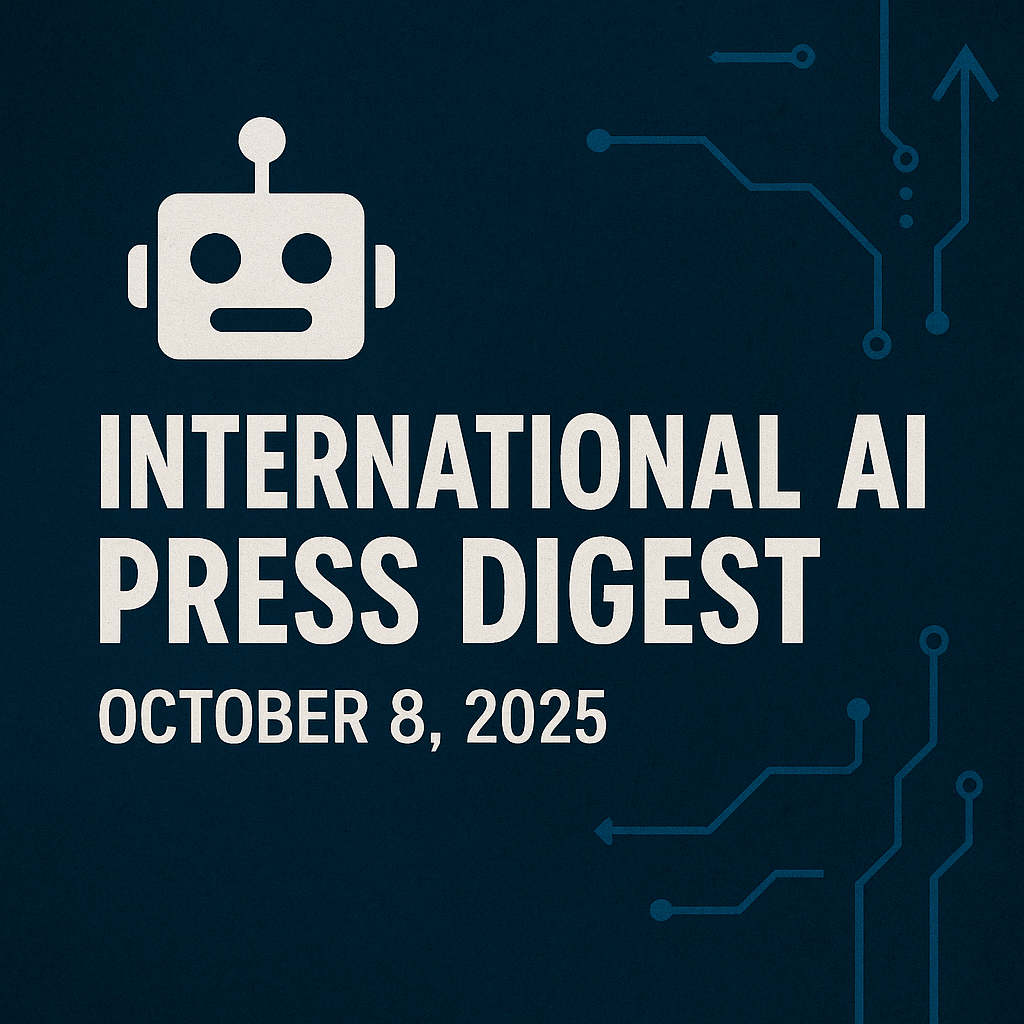
The Vatican is stepping into the world of AI with ethical guidelines that prioritize human dignity, offering a moral compass for development. By emphasizing transparency, non-discrimination, and data protection, the Vatican aims to ensure AI serves humanity and upholds fundamental rights. Review the Vatican's guidelines to understand how ethical AI development can align with human values.
WHO Europe Addresses AI in Electronic Health Records: Balancing Potential with Patient Safety

The future of healthcare is rapidly intertwining with artificial intelligence, and the World Health Organization (WHO) Europe is taking note, particularly when it comes to the integration of AI into Electronic Health Records (EHRs). Imagine EHRs evolving from simple digital filing cabinets to intelligent systems capable of providing real-time clinical decision support. That's the promise, but it comes with significant caveats.
Balancing Innovation and Risk
WHO Europe recently hosted a vital webinar focusing on this transition, emphasizing how AI could revolutionize healthcare delivery. The discussion centered on the potential for AI to transform EHRs from mere data repositories into active tools for clinicians. Imagine AI algorithms sifting through patient data to identify patterns, predict potential health crises, and even suggest personalized treatment plans. However, this exciting prospect is tempered by a critical concern: the potential risks to patient safety if AI is implemented poorly. This is a key focus in the realm of AI News, where the intersection of technology and well-being is constantly scrutinized.
The Governance Imperative
Recognizing these challenges, the European Commission is funding initiatives aimed at establishing robust governance frameworks for AI in healthcare. These frameworks are designed to ensure that AI systems are not only effective but also safe, ethical, and aligned with patient values. Without such frameworks, the rush to adopt AI could lead to unintended consequences, undermining trust in healthcare systems and potentially harming patients.
AI Readiness: A Reality Check
Despite the growing enthusiasm for AI, a significant portion of EU healthcare organizations may not be ready for prime time. Startlingly, 44% of these organizations report inadequate preparedness for AI adoption, even as they increasingly integrate these technologies into their workflows. This gap between ambition and readiness underscores the urgent need for education, training, and investment in the infrastructure required to support AI-driven healthcare.
Key Applications and Considerations
The WHO Europe webinar delved into specific applications of AI in EHRs, including:
Human Oversight: Ensuring that clinicians remain in control and are able to critically evaluate AI-generated recommendations. This is crucial to prevent over-reliance on AI and to catch potential errors.
Predictive Analytics: Using AI to forecast patient outcomes and identify individuals at high risk for certain conditions, allowing for proactive interventions.
Diagnosis Assistance: Supporting clinicians in making more accurate and timely diagnoses by analyzing complex medical data.
Treatment Optimization: Leveraging AI to personalize treatment plans based on individual patient characteristics and responses to therapy.
These applications hold immense promise, but realizing their full potential requires careful attention to ethical considerations, data privacy, and the need for continuous monitoring and evaluation. Tools like Deepmind AlphaFold show the promise of AI in the scientific space. As AI continues to evolve, tools in the space of Prompt Engineering will become paramount in ensuring that these complex systems are used to their fullest potential.
Ultimately, the successful integration of AI into EHRs hinges on a balanced approach that embraces innovation while prioritizing patient safety and ethical considerations. The work of WHO Europe and the European Commission serves as a crucial guide, helping healthcare organizations navigate this complex landscape and harness the power of AI for the benefit of all.
Singapore's AI Adoption Surge: A Case Study in Security Risks and Governance Gaps
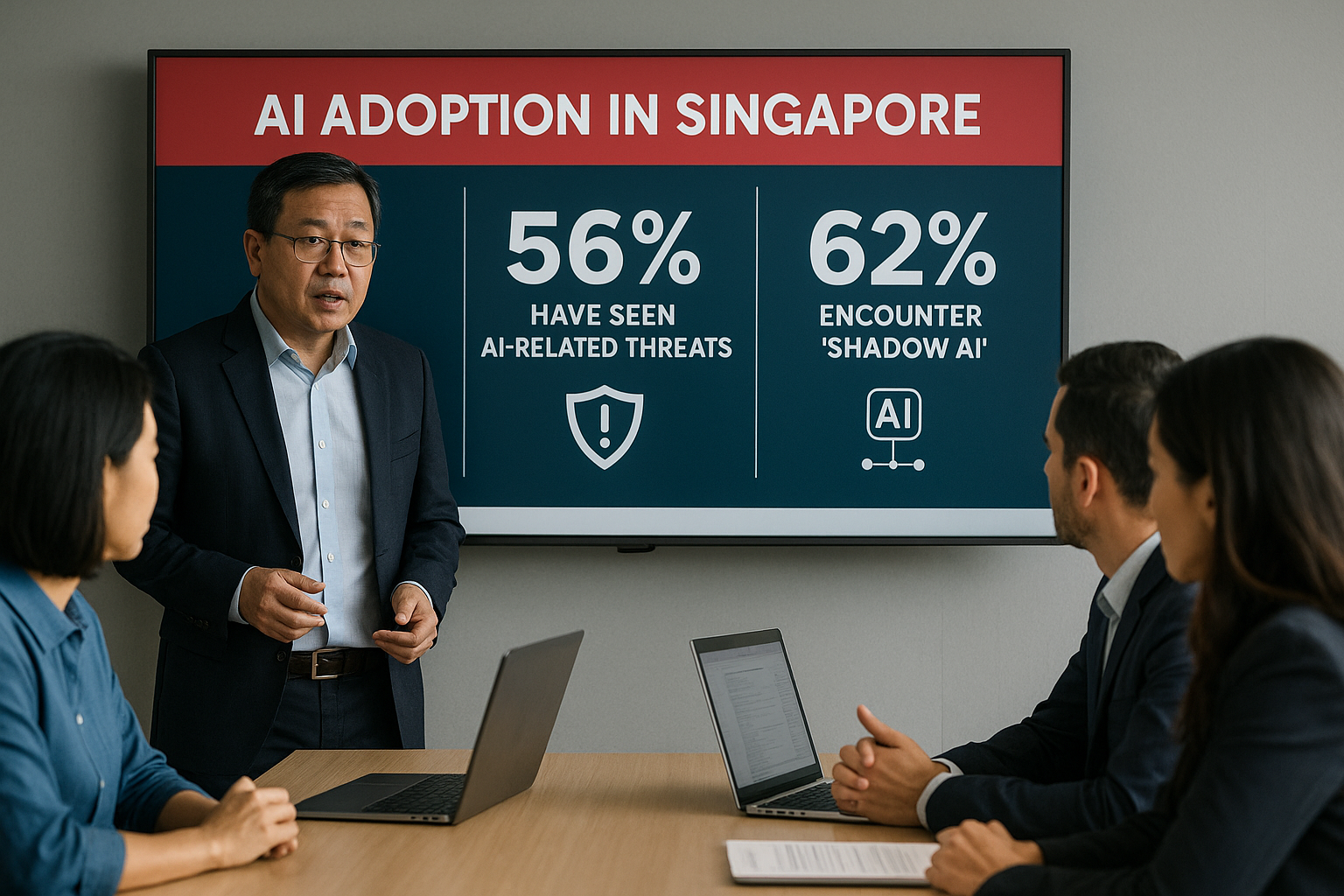
Singapore, a global tech hub, offers a compelling case study in the complexities of AI governance as adoption rates surge alongside emerging security risks. The nation leads the charge in enterprise AI adoption, with a remarkable 82% of organizations integrating AI into their security operations. However, this rapid embrace of AI has unveiled vulnerabilities, demonstrating the critical need for robust governance frameworks.
The Rising Tide of AI-Powered Threats
Despite Singapore's proactive AI integration, a significant 56% of organizations have already encountered AI-powered threats. This figure highlights the dual-edged nature of AI, where the same technologies enhancing security can also be weaponized by malicious actors. Compounding this challenge, 52% of Singaporean organizations reported a doubling of attack volumes, suggesting that AI is not only facilitating new threat vectors but also amplifying existing ones. Imagine a scenario where AI-driven phishing attacks become so sophisticated they can bypass traditional security filters, or where AI-powered malware adapts in real-time to evade detection. These are the realities Singaporean enterprises are grappling with, underlining the urgent need for adaptive security strategies.
Governance Gaps and 'Shadow AI'
Perhaps the most concerning aspect of Singapore's AI adoption is the lag in governance policies. Only 56% of organizations have established governance policies specifically for AI identities, leaving a substantial gap in oversight and accountability. Furthermore, 62% of organizations are contending with 'shadow AI' incidents, where AI tools are deployed without proper authorization or monitoring. This 'shadow AI' phenomenon creates blind spots in security, making it difficult to detect and respond to potential threats. To mitigate these risks, organizations need to establish clear guidelines for AI deployment, ensuring that all AI initiatives align with security protocols.
The Emergence of New Security Roles
In response to these evolving threats, new job categories are beginning to emerge within Singapore's cybersecurity landscape. Security data scientists, who can analyze vast datasets to identify patterns and anomalies indicative of AI-driven attacks, are in high demand. Similarly, AI-specific incident response professionals, equipped to handle the unique challenges posed by AI-powered threats, are becoming increasingly valuable. This shift underscores the need for cybersecurity professionals to upskill and adapt to the changing demands of an AI-driven world. Organizations may even turn to AI-driven security tools such as Microsoft Copilot, an AI assistant designed to enhance productivity and decision-making, to help manage these emerging threats.
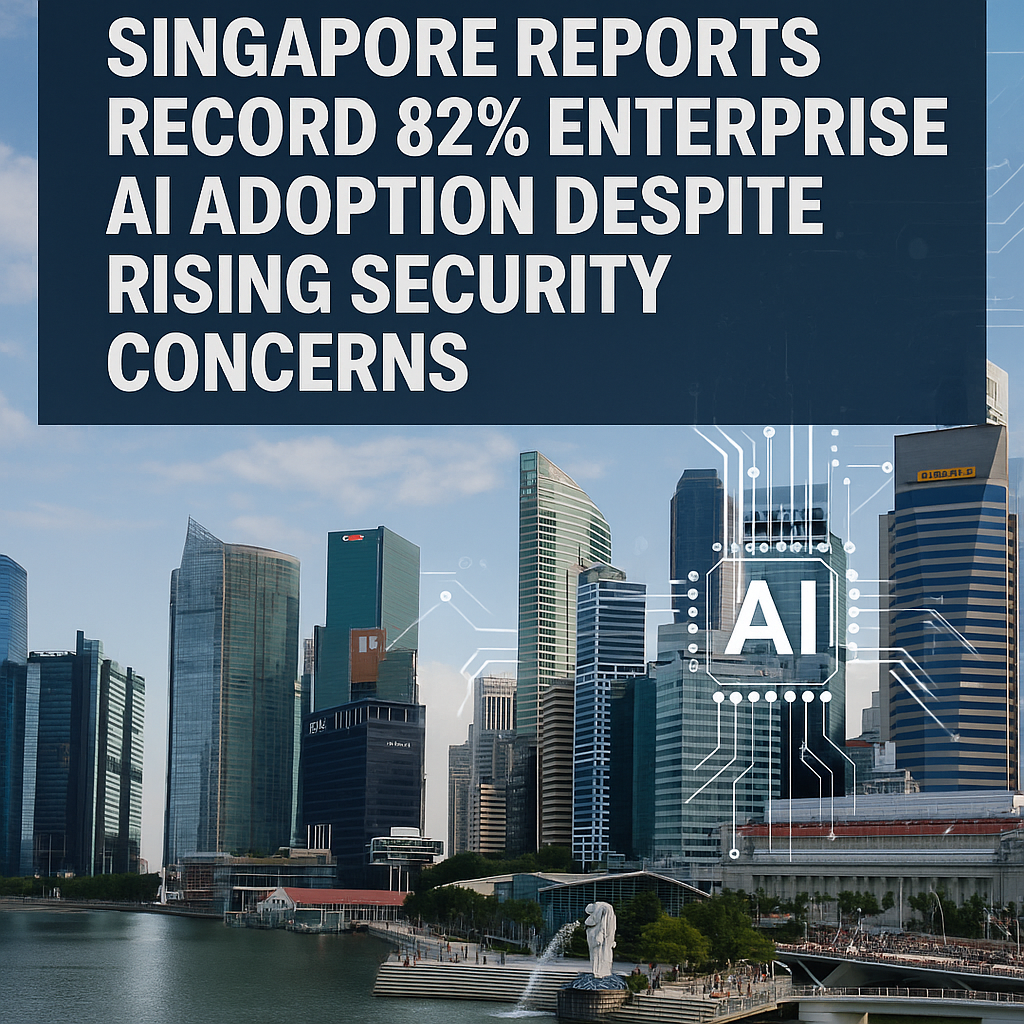
Balancing Innovation and Security
Singapore's experience serves as a cautionary tale for other nations pursuing widespread AI adoption. While AI offers immense potential for enhancing security and driving innovation, it also introduces new risks that must be proactively addressed. The key lies in striking a balance between fostering AI innovation and establishing robust governance frameworks. As Singapore continues to navigate this complex terrain, its lessons learned will undoubtedly inform global best practices for AI security and governance. Concepts from our AI News section are becoming increasingly relevant in today's world. By prioritizing security and ethical considerations from the outset, organizations can harness the full power of AI while mitigating its potential harms.
Vatican's Ethical AI Guidelines: Prioritizing Human Dignity in AI Development
In a world increasingly shaped by artificial intelligence, the moral compass guiding its development becomes ever more critical, leading even the Vatican to step into the arena with its own set of ethical AI guidelines, making waves across the tech and theological communities alike.
The Vatican's Stand on AI: Human Dignity First
The Vatican's comprehensive guidelines on AI implementation place a strong emphasis on the preservation of human dignity. These guidelines underscore a profound conviction: AI should be a tool serving humanity, designed to enhance human capabilities rather than supplant human judgment and autonomy. This position highlights the Church's concern that unchecked AI development could lead to a devaluation of human life and the erosion of fundamental rights. It's a call for AI systems that respect and uplift every individual, regardless of their background or circumstances.
Pope Leo XIV has been particularly vocal on this matter, stressing that AI should never compromise the dignity of any person. This statement encapsulates the core principle behind the Vatican's initiative: ethical AI must be rooted in a deep respect for the inherent worth of every human being.
Core Principles: Transparency, Non-Discrimination, and Data Protection
At the heart of the Vatican's framework are three fundamental principles:
Transparency: AI systems should be understandable, with their decision-making processes open to scrutiny. This prevents AI from becoming a black box, fostering trust and accountability.
Non-Discrimination: AI algorithms must be designed to avoid bias and ensure equitable outcomes for all. This principle aims to prevent AI from perpetuating or amplifying existing societal inequalities.
Data Protection: Individuals' data must be handled with utmost care and respect for privacy. This includes obtaining informed consent and implementing robust security measures to prevent data breaches. For instance, tools that handle personal data like HubSpot, a popular CRM and marketing automation platform, must adhere to strict data protection protocols.
These principles collectively form a robust ethical foundation for AI development, ensuring that technology serves the common good and upholds human rights.
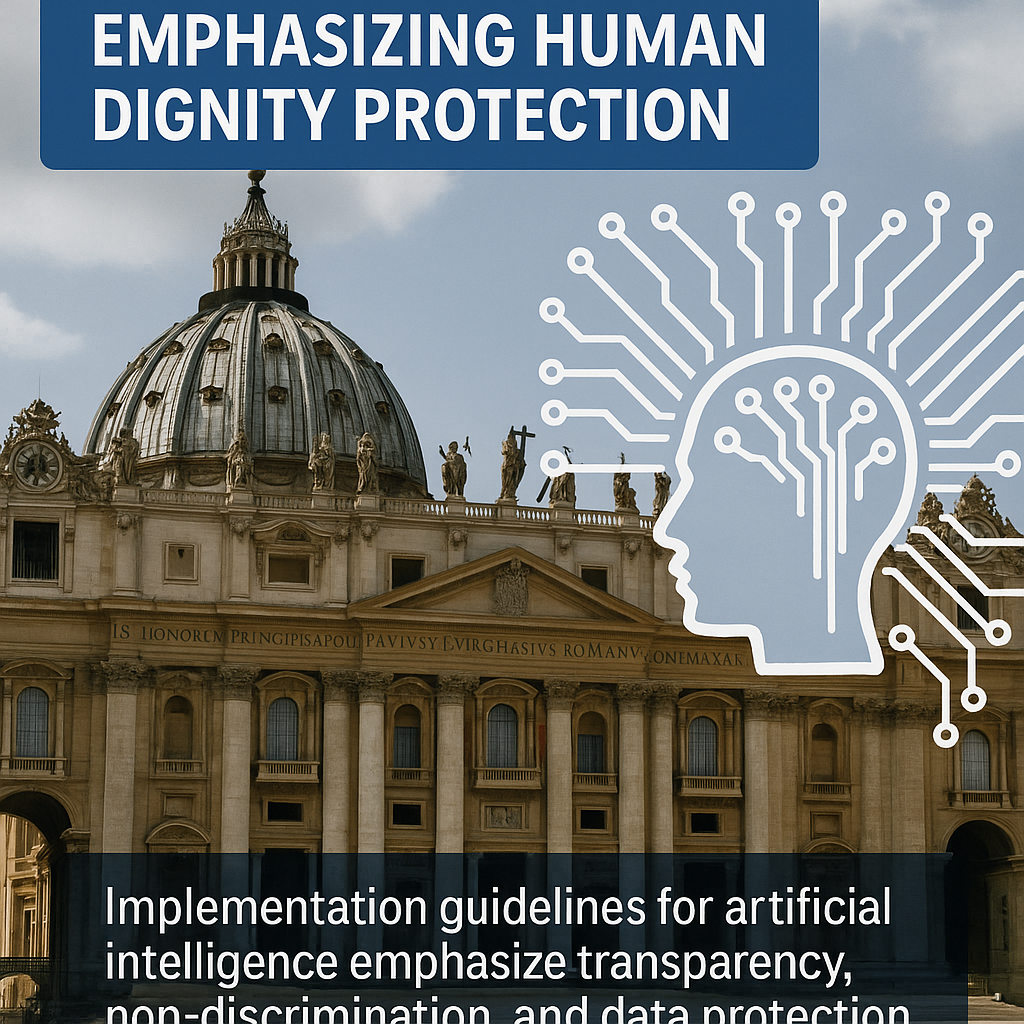
Addressing Key Concerns: Anthropocentric Design and Sustainability
The Vatican's framework goes beyond broad principles, addressing specific concerns related to AI design and impact. Anthropocentric design is a key focus, ensuring that AI systems are human-centered and aligned with human values. This approach prioritizes human needs and aspirations in the development process. Furthermore, the guidelines emphasize the importance of reliability standards for AI systems, ensuring that they function safely and effectively. For example, if someone were developing a new chatbot, like ChatGPT, they should take safety precautions in order to prevent it from giving harmful advice.
Moreover, the framework tackles environmental sustainability, urging developers to minimize the ecological footprint of AI technologies. This reflects a growing awareness of the environmental costs associated with AI, particularly the energy consumption of large language models and data centers. This call encourages responsible innovation that balances technological progress with environmental stewardship.
By addressing these critical areas, the Vatican seeks to promote a holistic and responsible approach to AI development, setting a standard for ethical innovation that extends beyond the tech industry. As AI continues to evolve, these guidelines serve as a crucial reminder that technology must always be guided by a strong moral compass, as explored in depth in our AI News section.
AI and the Workforce: Beyond Displacement Fears to Skills Transformation
It's time to move beyond the doom and gloom. While early headlines predicted widespread job losses due to AI, emerging research paints a more nuanced picture: AI isn't necessarily about replacing jobs, but fundamentally reshaping them. The narrative is shifting from displacement fears to focusing on the massive skills transformation that's already underway.
AI: The Job Transformer, Not Just a Job Killer
Far from a dystopian scenario of robots snatching all the jobs, AI is proving to be a powerful catalyst for evolving job functions and even spawning entirely new employment categories. A prime example is the booming field of cybersecurity. As AI systems become more integrated into our lives, the need to protect them from malicious attacks skyrockets, leading to a surge in demand for cybersecurity experts who understand the intricacies of AI.
Singapore: A Microcosm of the AI-Driven Job Market
Singapore offers a compelling case study. The nation's proactive adoption of AI technologies has directly translated into increased demand for specialized roles. Specifically, there's been a notable surge in the need for security data scientists and AI engineers. These professionals are crucial for building, maintaining, and securing AI-powered systems, demonstrating how AI adoption fuels the creation of highly skilled jobs.
The AI Skills Gap: A Growing Challenge
However, this transformation doesn't come without its hurdles. A significant challenge is the widening AI skills gap. A staggering 81% of organizations report that they lack sufficient infrastructure to adequately support their AI ambitions. This isn't just about hardware; it's also about the human element. Without a workforce equipped with the necessary skills to manage, interpret, and secure AI systems, organizations risk falling behind. To illustrate, companies are increasingly adopting tools such as Google Cloud AI to provide the infrastructure to support their AI ambitions. Google Cloud AI offers a suite of AI and machine learning products and resources, including pre-trained models and customizable tools to build AI-powered applications.
Retraining: The Key to Workforce Readiness
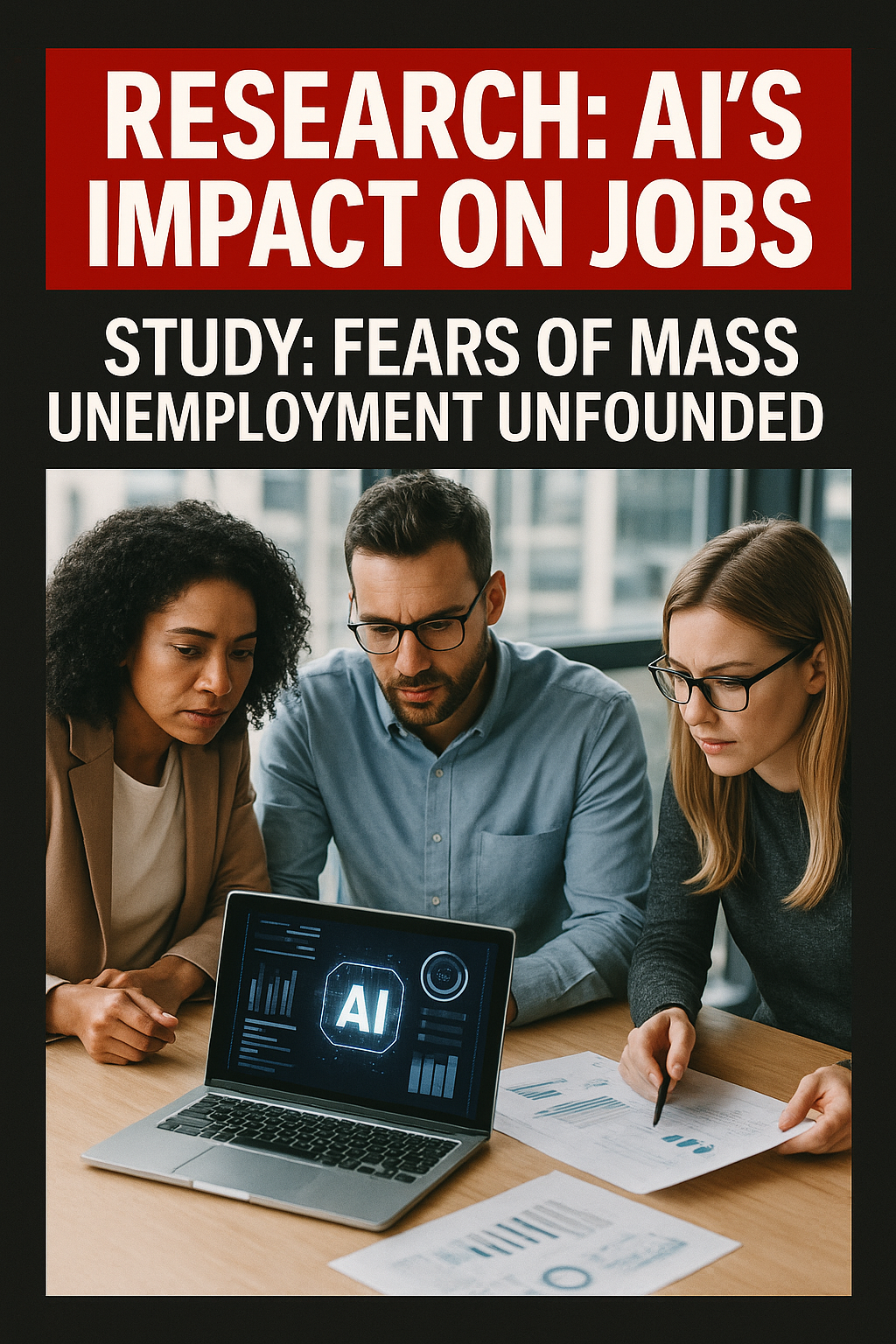
The solution? A strategic and urgent investment in workforce retraining programs. These programs are essential to bridge the gap between the skills workers currently possess and the skills they will need to thrive in an AI-driven economy. It's about equipping individuals with the knowledge and expertise to collaborate with AI, manage AI systems, and leverage AI tools to enhance their productivity. To learn more about the AI revolution in education, see AI in Education. DataCamp is one of the best learning platforms to upskill in AI and data science.
The future of work isn't about humans versus AI; it's about humans with AI. Workforce retraining is the bridge that allows us to cross into that future successfully.
Ultimately, addressing the skills gap is paramount to realizing the full potential of AI. By prioritizing retraining initiatives, we can ensure that the workforce is not left behind, but instead, empowered to drive innovation and contribute to a thriving AI-powered future. This shift in focus – from fearing job losses to embracing skills transformation – is crucial for navigating the changing landscape of AI and the workforce. And, if you are unsure on where to start with AI, check out our AI fundamentals learning section.
OpenAI's Universal Interface Vision: Reshaping Digital Interactions with ChatGPT
Imagine a world where interacting with digital services is as simple as talking to a friend – that's the vision OpenAI is pursuing with ChatGPT. No more jumping between countless apps; instead, you have a single, intuitive interface powered by AI.
Expanding ChatGPT's Horizons
In 2025, OpenAI significantly expanded ChatGPT's capabilities by introducing direct integrations with popular services like Spotify and Zillow, along with the ability to make purchases directly through the interface. This move signals a clear intention to transform how we access and use online services. Think of it: instead of opening the Zillow app, you simply ask ChatGPT to find apartments matching your criteria, and it handles the search and presents the results in a conversational manner. This streamlining could redefine user experience.
A Universal Interface
OpenAI CEO Sam Altman has boldly declared ChatGPT's ambition to become 'the universal interface' for all digital interactions. This isn't just about chatbots; it's about creating a central hub where users can seamlessly access information, perform tasks, and connect with various services using natural language. It's a paradigm shift from the current app-based ecosystem, where users must navigate a fragmented landscape of individual applications.
New Features and Paradigm Shift
Beyond integrations, OpenAI has also rolled out several new features designed to enhance ChatGPT's utility. The introduction of Instant Checkout streamlines the purchasing process, making it easier than ever to buy products and services through the platform. Academic study modes cater to students and researchers, providing specialized assistance and resources. And, of course, the expanded features of Sora 2 offer even more impressive AI video generation capabilities. All of these improvements point towards a future where AI acts as an intermediary between users and the digital world.
This approach has the potential to disrupt the dominance of smartphones and existing platforms. If ChatGPT can truly become a one-stop shop for all digital needs, it could challenge the way we interact with technology, shifting the focus from app-based navigation to AI-mediated experiences. Imagine asking ChatGPT to book a flight, order groceries, and summarize the latest AI News – all within a single conversation. The implications are vast, and the competition for digital dominance is heating up.
OpenAI's vision of ChatGPT as a universal interface represents a fundamental shift in how we might interact with technology. By integrating diverse services and offering a more intuitive, conversational experience, OpenAI is positioning ChatGPT to become a central hub for all our digital needs, potentially reshaping the entire digital landscape.
🎧 Listen to the Podcast
Hear us discuss this topic in more detail on our latest podcast episode: https://open.spotify.com/episode/2BPesSTRuv0qtdPok33Fed?si=RyUFiGQnSM64KV8eFJFdVw
Keywords: AI, Artificial Intelligence, AI Governance, AI Ethics, AI Security, AI Healthcare, AI Workforce, ChatGPT, Electronic Health Records, Digital Transformation, AI Adoption, Human Dignity, Skills Gap, Workforce Retraining, Universal Interface
Hashtags: #AIgovernance #EthicalAI #AIsecurity #AIworkforce #ChatGPT
For more AI insights and tool reviews, visit our website https://best-ai-tools.org, and follow us on our social media channels!
Website: https://best-ai-tools.org
X (Twitter): https://x.com/bitautor36935
Instagram: https://www.instagram.com/bestaitoolsorg
Telegram: https://t.me/BestAIToolsCommunity
Medium: https://medium.com/@bitautor.de
Spotify: https://creators.spotify.com/pod/profile/bestaitools
Facebook: https://www.facebook.com/profile.php?id=61577063078524
YouTube: https://www.youtube.com/@BitAutor
Recommended AI tools
Centre for the Governance of AI
Scientific Research
Navigating the ethical landscape of AI
TeamBridge
Productivity & Collaboration
The AI-native platform for managing your frontline workforce
Credo AI
Data Analytics
The trusted leader in AI governance
Podurama
Conversational AI
Simplify your audio content


